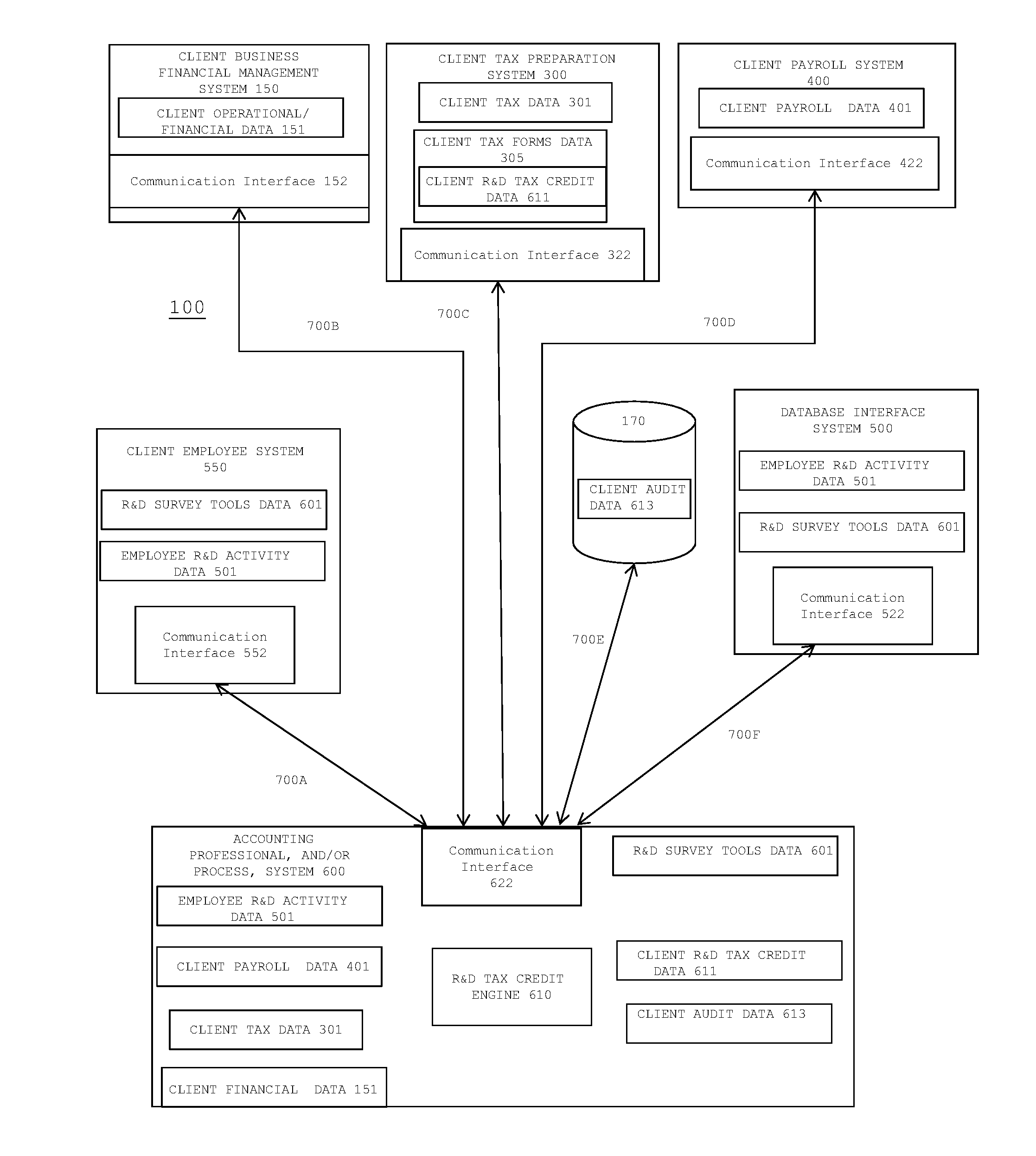Method and system for providing an automated and integrated R and D tax credit tool
a tax credit and tool technology, applied in the field of providing an automated and integrated r and d tax credit tool, can solve the problems of low response rate, inordinate spending time, and difficulty in requiring employees to complete/submit time reports, so as to minimize the risk of incorrectly claiming and maximize r&d tax credits
- Summary
- Abstract
- Description
- Claims
- Application Information
AI Technical Summary
Benefits of technology
Problems solved by technology
Method used
Image
Examples
Embodiment Construction
[0028]Embodiments will now be discussed with reference to the accompanying FIG.s, which depict one or more exemplary embodiments. Embodiments may be embodied in many different forms and should not be construed as limited to the embodiments set forth herein, shown in the FIG.s, and / or described below. Rather, these exemplary embodiments are provided to allow a complete disclosure that conveys the principles of the invention, as set forth in the claims, to those of skill in the art.
[0029]As used herein, the term “employee” includes, but is not limited to: salaried workers and / or service providers; hourly workers and / or service providers; full time workers and / or service providers; part time workers and / or service providers; contracted workers and / or service providers, or “contractors”; and / or any other workers and / or service providers who are provided some form of compensation for their time and services.
[0030]In accordance with one embodiment, a method and system for providing an aut...
PUM
 Login to View More
Login to View More Abstract
Description
Claims
Application Information
 Login to View More
Login to View More - R&D
- Intellectual Property
- Life Sciences
- Materials
- Tech Scout
- Unparalleled Data Quality
- Higher Quality Content
- 60% Fewer Hallucinations
Browse by: Latest US Patents, China's latest patents, Technical Efficacy Thesaurus, Application Domain, Technology Topic, Popular Technical Reports.
© 2025 PatSnap. All rights reserved.Legal|Privacy policy|Modern Slavery Act Transparency Statement|Sitemap|About US| Contact US: help@patsnap.com



